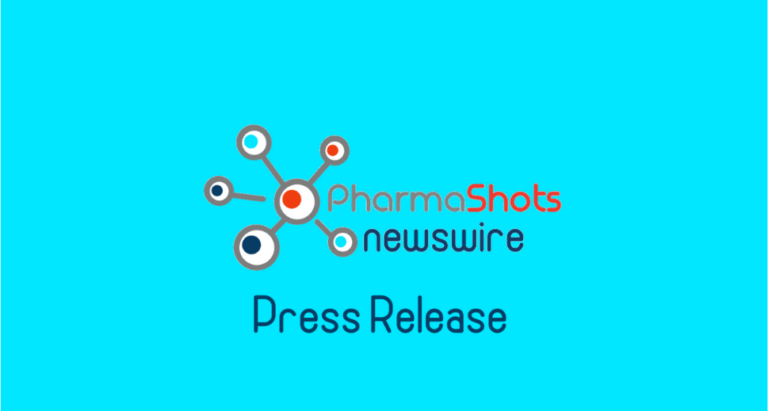United Therapeutics Announces FDA Acceptance of Tyvaso DPI? New Drug Application For Priority Review
 SILVER SPRING, Md.?and?RESEARCH TRIANGLE PARK, N.C.,?June 16, 2021?/PRNewswire/ -- United Therapeutics Corporation (Nasdaq:?UTHR) today announced that the U.S. Food and Drug Administration (FDA) accepted for priority review the New Drug Application (NDA) for Tyvaso DPI? (inhaled treprostinil) for the treatment of pulmonary arterial hypertension (PAH) and pulmonary hypertension associated with interstitial lung disease (PH-ILD). United Therapeutics expects the agency's review to be complete in?October 2021. FDA also indicated that they have not identified any potential review issues at this time.
Tyvaso DPI is a next-generation dry powder formulation of Tyvaso. If approved, Tyvaso DPI is expected to provide a more convenient method of administration as compared with traditional nebulized Tyvaso therapy.
"The acceptance of the Tyvaso DPI NDA for review represents an important regulatory step toward offering this?meaningful new product to both PAH and PH-ILD patients," said?Martine Rothblatt, Ph.D., Chairperson and Chief Executive Officer of United Therapeutics. "If approved, Tyvaso DPI will represent yet another path to help us achieve our goal of serving 25,000 patients by the end of 2025."
The NDA includes?data?from the?BREEZE?study that demonstrated safety and tolerability of Tyvaso DPI in patients with PAH transitioning from Tyvaso??(treprostinil) Inhalation Solution. A separate study in healthy volunteers demonstrated comparable treprostinil exposure between Tyvaso DPI and Tyvaso Inhalation Solution.
In its communications with United Therapeutics, the FDA indicated that approval of the NDA will be subject to an inspection of the Tyvaso DPI manufacturing facility operated by MannKind Corporation; FDA and MannKind have jointly targeted the third quarter of 2021 to complete the inspection.
About Tyvaso DPI?
Tyvaso DPI? is an investigational drug-device combination therapy comprised of a dry powder formulation of treprostinil and a small, portable, dry powder inhaler. If approved, Tyvaso DPI is expected to provide a more convenient method of administration compared with traditional nebulized Tyvaso??therapy. United Therapeutics is developing Tyvaso DPI under a collaboration and license agreement with MannKind Corporation (Nasdaq:?MNKD). Tyvaso DPI incorporates the dry powder formulation technology and Dreamboat??inhalation device technology used in MannKind's Afrezza??(insulin human) Inhalation Powder product, which was approved by the FDA in 2014.
United Therapeutics and MannKind are also developing BluHale?, a Bluetooth-connected accessory for the Tyvaso DPI inhaler with a companion mobile application intended to help the patient track information about inhaler use.
About the?BREEZE?and healthy volunteer PK?studies
The?BREEZE?study was a single-sequence study in which 51 subjects on a stable regimen of Tyvaso Inhalation Solution were transitioned to Tyvaso DPI at a corresponding treprostinil dose. The primary objective of the study was to evaluate the safety and tolerability of Tyvaso DPI during a three-week treatment phase in PAH patients previously treated with Tyvaso Inhalation Solution.
Secondary objectives of the study were to evaluate: (1) the systemic exposure and pharmacokinetics of treprostinil when delivered as Tyvaso Inhalation Solution and Tyvaso DPI; (2) six-minute walk distance (6MWD) at study entry and after three weeks of treatment with Tyvaso DPI; (3) the long-term safety and tolerability of Tyvaso DPI during an optional extension phase (OEP) in patients previously treated with Tyvaso Inhalation Solution; (4) patient satisfaction with and preference for inhaled treprostinil devices assessed at study entry when patients were using Tyvaso Inhalation Solution and after three weeks using Tyvaso DPI; and (5) patient-reported PAH symptoms and impact (PAH-SYMPACT?)?assessed at study entry when patients were using Tyvaso Inhalation Solution and after three weeks using Tyvaso DPI.
Primary safety and tolerability objective.?Transition from Tyvaso Inhalation Solution to Tyvaso DPI was safe and well tolerated. Forty-nine out of 51 patients (96%) completed the treatment phase and there were no study drug related adverse events. Most adverse events experienced during the study were mild to moderate in severity and occurred at severities and frequencies consistent with those seen in other inhaled treprostinil studies in patients with PAH.
Secondary objectives.?Three weeks after switching from Tyvaso Inhalation Solution to Tyvaso DPI, patients in the?BREEZE?study demonstrated:
SILVER SPRING, Md.?and?RESEARCH TRIANGLE PARK, N.C.,?June 16, 2021?/PRNewswire/ -- United Therapeutics Corporation (Nasdaq:?UTHR) today announced that the U.S. Food and Drug Administration (FDA) accepted for priority review the New Drug Application (NDA) for Tyvaso DPI? (inhaled treprostinil) for the treatment of pulmonary arterial hypertension (PAH) and pulmonary hypertension associated with interstitial lung disease (PH-ILD). United Therapeutics expects the agency's review to be complete in?October 2021. FDA also indicated that they have not identified any potential review issues at this time.
Tyvaso DPI is a next-generation dry powder formulation of Tyvaso. If approved, Tyvaso DPI is expected to provide a more convenient method of administration as compared with traditional nebulized Tyvaso therapy.
"The acceptance of the Tyvaso DPI NDA for review represents an important regulatory step toward offering this?meaningful new product to both PAH and PH-ILD patients," said?Martine Rothblatt, Ph.D., Chairperson and Chief Executive Officer of United Therapeutics. "If approved, Tyvaso DPI will represent yet another path to help us achieve our goal of serving 25,000 patients by the end of 2025."
The NDA includes?data?from the?BREEZE?study that demonstrated safety and tolerability of Tyvaso DPI in patients with PAH transitioning from Tyvaso??(treprostinil) Inhalation Solution. A separate study in healthy volunteers demonstrated comparable treprostinil exposure between Tyvaso DPI and Tyvaso Inhalation Solution.
In its communications with United Therapeutics, the FDA indicated that approval of the NDA will be subject to an inspection of the Tyvaso DPI manufacturing facility operated by MannKind Corporation; FDA and MannKind have jointly targeted the third quarter of 2021 to complete the inspection.
About Tyvaso DPI?
Tyvaso DPI? is an investigational drug-device combination therapy comprised of a dry powder formulation of treprostinil and a small, portable, dry powder inhaler. If approved, Tyvaso DPI is expected to provide a more convenient method of administration compared with traditional nebulized Tyvaso??therapy. United Therapeutics is developing Tyvaso DPI under a collaboration and license agreement with MannKind Corporation (Nasdaq:?MNKD). Tyvaso DPI incorporates the dry powder formulation technology and Dreamboat??inhalation device technology used in MannKind's Afrezza??(insulin human) Inhalation Powder product, which was approved by the FDA in 2014.
United Therapeutics and MannKind are also developing BluHale?, a Bluetooth-connected accessory for the Tyvaso DPI inhaler with a companion mobile application intended to help the patient track information about inhaler use.
About the?BREEZE?and healthy volunteer PK?studies
The?BREEZE?study was a single-sequence study in which 51 subjects on a stable regimen of Tyvaso Inhalation Solution were transitioned to Tyvaso DPI at a corresponding treprostinil dose. The primary objective of the study was to evaluate the safety and tolerability of Tyvaso DPI during a three-week treatment phase in PAH patients previously treated with Tyvaso Inhalation Solution.
Secondary objectives of the study were to evaluate: (1) the systemic exposure and pharmacokinetics of treprostinil when delivered as Tyvaso Inhalation Solution and Tyvaso DPI; (2) six-minute walk distance (6MWD) at study entry and after three weeks of treatment with Tyvaso DPI; (3) the long-term safety and tolerability of Tyvaso DPI during an optional extension phase (OEP) in patients previously treated with Tyvaso Inhalation Solution; (4) patient satisfaction with and preference for inhaled treprostinil devices assessed at study entry when patients were using Tyvaso Inhalation Solution and after three weeks using Tyvaso DPI; and (5) patient-reported PAH symptoms and impact (PAH-SYMPACT?)?assessed at study entry when patients were using Tyvaso Inhalation Solution and after three weeks using Tyvaso DPI.
Primary safety and tolerability objective.?Transition from Tyvaso Inhalation Solution to Tyvaso DPI was safe and well tolerated. Forty-nine out of 51 patients (96%) completed the treatment phase and there were no study drug related adverse events. Most adverse events experienced during the study were mild to moderate in severity and occurred at severities and frequencies consistent with those seen in other inhaled treprostinil studies in patients with PAH.
Secondary objectives.?Three weeks after switching from Tyvaso Inhalation Solution to Tyvaso DPI, patients in the?BREEZE?study demonstrated:
- Improvements in 6MWD compared to baseline. These improvements in 6MWD compared to baseline were sustained in the OEP through the data cut-off date.
- Improvements in overall satisfaction with the Tyvaso DPI inhaler compared to the Tyvaso Inhalation Solution nebulizer at baseline using an internally developed satisfaction and preference questionnaire.
- Improvement in patient-reported outcomes using the validated PAH-SYMPACT questionnaire.
- Pulmonary arterial hypertension (PAH; WHO Group 1) to improve exercise ability. Studies establishing effectiveness predominately included patients with NYHA Functional Class III symptoms and etiologies of idiopathic or heritable PAH (56%) or PAH associated with connective tissue diseases (33%).?
?
The effects diminish over the minimum recommended dosing interval of 4 hours; treatment timing can be adjusted for planned activities.?
?
While there are long-term data on use of treprostinil by other routes of administration, nearly all controlled clinical experience with inhaled treprostinil has been on a background of bosentan (an endothelin receptor antagonist) or sildenafil (a phosphodiesterase type 5 inhibitor). The controlled clinical experience was limited to 12 weeks in duration. - Pulmonary hypertension associated with interstitial lung disease (PH-ILD; WHO Group 3) to improve exercise ability. The study establishing effectiveness predominately included patients with etiologies of idiopathic interstitial pneumonia (IIP) (45%) inclusive of idiopathic pulmonary fibrosis (IPF), combined pulmonary fibrosis and emphysema (CPFE) (25%), and WHO Group 3 connective tissue disease (22%).
- TYVASO is a pulmonary and systemic vasodilator. In patients with low systemic arterial pressure, TYVASO may produce symptomatic hypotension.
- TYVASO inhibits platelet aggregation and increases the risk of bleeding.
- Co-administration of a cytochrome P450 (CYP) 2C8 enzyme inhibitor (e.g., gemfibrozil) may increase exposure (both Cmax?and AUC) to treprostinil. Co-administration of a CYP2C8 enzyme inducer (e.g., rifampin) may decrease exposure to treprostinil. Increased exposure is likely to increase adverse events associated with treprostinil administration, whereas decreased exposure is likely to reduce clinical effectiveness.
- The concomitant use of TYVASO with diuretics, antihypertensives, or other vasodilators may increase the risk of symptomatic hypotension.
- Human pharmacokinetic studies with an oral formulation of treprostinil (treprostinil diolamine) indicated that co-administration of the cytochrome P450 (CYP) 2C8 enzyme inhibitor, gemfibrozil, increases exposure (both Cmax?and AUC) to treprostinil. Co-administration of the CYP2C8 enzyme inducer, rifampin, decreases exposure to treprostinil. It is unclear if the safety and efficacy of treprostinil by the inhalation route are altered by inhibitors or inducers of CYP2C8.
- Limited case reports of treprostinil use in pregnant women are insufficient to inform a drug-associated risk of adverse developmental outcomes. However, pulmonary arterial hypertension is associated with an increased risk of maternal and fetal mortality. There are no data on the presence of treprostinil in human milk, the effects on the breastfed infant, or the effects on milk production.
- Safety and effectiveness in pediatric patients have not been established.
- Across clinical studies used to establish the effectiveness of TYVASO in patients with PAH and PH?ILD, 268 (47.8%) patients aged 65 years and over were enrolled. The treatment effects and safety profile observed in geriatric patients were similar to younger patients. In general, dose selection for an elderly patient should be cautious, reflecting the greater frequency of hepatic, renal, or cardiac dysfunction, and of concomitant diseases or other drug therapy.
- Pulmonary Arterial Hypertension (WHO Group 1)
In a 12-week, placebo-controlled study (TRIUMPH I) of 235 patients with PAH (WHO Group 1 and nearly all NYHA Functional Class III), the most common adverse reactions seen with TYVASO in =4% of PAH patients and more than 3% greater than placebo in the placebo-controlled study were cough (54% vs 29%), headache (41% vs 23%), throat irritation/pharyngolaryngeal pain (25% vs 14%), nausea (19% vs 11%), flushing (15% vs <1%), and syncope (6% vs <1%). In addition, adverse reactions occurring in =4% of patients were dizziness and diarrhea.
- Pulmonary Hypertension Associated with ILD (WHO Group 3)
In a 16-week, placebo-controlled study (INCREASE) of 326 patients with PH-ILD (WHO Group 3), adverse reactions were similar to the experience in studies of PAH.
Dewey Steadman?at (202) 919-4097
Email:?ir@unither.com SOURCE United Therapeutics Corporation






